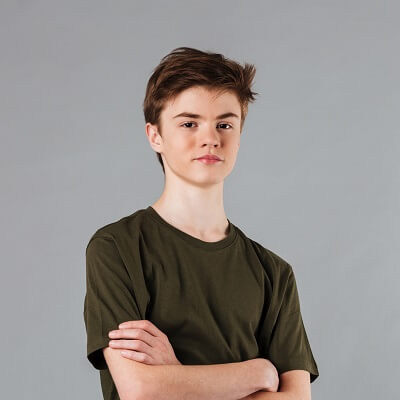Austrálie a Nový Zéland
6. 7. 2021 2021-07-06 20:31Austrálie a Nový Zéland
Austrálie a Nový Zéland
Australia
The commonwealth of Australia
- area 7 700 000 sq. km
- capital – Camberra
- situated on the southern hemisphere, surrounded by the Indian and Pacific ocean
Relief
- along the east coast there is Great Barrier Reef, it‘s the biggest coral reef on the Earth
- islands – Tasmania, King Island, Flinders Island, Kangaroo Island, Mellville Island, Groote Island, …
- Australia is mostly flat – Great Western Plateau (occupies more than 1/2 continent),
- deserts – Great Sandy Desert, Gibson Desert, Great Victoria Desert
- Central-Eastern Lowland – tropic forests, savannah, creeks (rivers, which dry out during the summer)
- rivers – the Murray, the Darling
- lakes – Lake Eyre, Lake Torrens, Lake Gairdner
- mountain – Australian Cordilleras (parts – Great Dividing Range, New England Range, Blue Mountains, Australian Alps), highest mountain is Mt. Kosciusco (2 230m)
- Thanks to a different historic development Australia has some animals not to be seen in the rest of the world
- (Tasmanian devil, platypus, black swom, EMU, the bird of paradise, koala bear, wombat, dingo)
- sheep were rabbits were brought from England
- In the north and north west there is extremely hot and dry weather, in the northeast there are heavy rainfalls. There are jungles in the York Peninsula
History
- In the 15th century it was believed that there is a large continent there
- Australia was discovered in the 18th century by James Cook – opened the continent for the English
- at first it was a penalty colony, because in Britain there were a lot of prisoners and not enough prisons
- soldiers guards and some of their families came with prisoners
- gold rushes (between 1850 – 1860) – the second wave of the settlers – population rapidly has increased
- on January 1, 1901 the six colonies became states of a new nation – the Commonwealth of Australia
Industry
- Belongs to the highly developed countries, The English built very modern industry during WW 2.
- Rich sources of raw materials – coal (5% from the worlds localities), iron ore, manganese, bauxite (the first in the world), uranium, gold, lead, zinc… Broken hill
- mining industry, food, textile, machinery
Agriculture
- little arable land – deserts
- sheep and cattle breeding (wool and diary product)
- grow vegetables, wheat, fruit, sugar cane
Population
- 18 000 000 inhabitants (228 000 Aborigines)
- half of the population live to 200 m from the coast, most of them in the south-west of the continent, the rest of the country is thinly inhabited (grasslands, deserts)
- The original inhabitants were the aborigines – they lived there over 40 000 years. There were over 1000000 ab. Many of them died in the wars against the English to protect their land. Today only 1000000 survive. Some of them still live their traditional life in the desert areas of the Australian outback. The government has recently given some land back to them. This includes ULURU (Ayers Rock), a huge rock in the middle of Australia.
Political system
- member of the British Commonwealth of Nations
- the official head is the British Queen
- the deputy is General governor
- the power is in hands of Prime Minister
- The commonwealth of Australia consists of 6 states and 2 territories
- in each state there is the federal parliament for local affairs
- in Cambera – Federal government, which deals with finance
Cities
- Adelaide
- Sydney – largest city, 2.9 mil inhabitants
Arthur Philip founded it. The 1150m long arch of Harbour Bridge span it. It runs 140 m above the sea.
Opera House – fascinating roof construction, Big and Small Concert Halls, restaurant, theatre
Pitt Street, George Street, Macquarine Street – numerous skyscrapers
Centre point – tower (Pitt street) – 304,8m high
The centre of Sydney is rich in parks with a huge amount of exotic plants (The Royal Botanical Garden)
Bondi Manly, Palm Beach – beaches
- Melbourne – second largest city
In 1835 John Batman founded a company there. The village was named after the British Prime Minister Lord Melbourne
Now it is a modern city with a well-developed industry, lot of parks, there are right-angled streets and many of skyscrapers.
National Museum – contain valuable skeletons of dinosaurs
The National Gallery and the Art Centre – arts centres of Victoria
Old-fashioned trams run there to attract the tourist
Shrine of remembrance / a monument devoted to Australian who died in the wars
- Darwin – a Chinese temple – East Asian decoration
The museum of the transcontinental railway
The botanical garden
Berry springs – National Park
- Canberra – capital of Commonwealth of Australia
Australian National University
Royal Australian mint
Australian War Memorial
Australian National Gallery
New Zealand
- area 270 000 sq. km, 3 500 000 inhabitants
- bigger than Great Britain
- on the southern hemisphere, in the Pacific Ocean, to the east of Australia
- capital – Wellington; the biggest city is Auckland
Relief
- two islands – North island, South island
- mainly rolling and hilly land, around the coast several lowlands
- North island – typical volcanic areas, hot springs, geysers
– Short and torrential rivers (longest – Waikato)
– Largest lake – Taupo
- South island – the Southern Alps – Mount Cook ( the highest mountain 3764 m )
- a lot of forests
- interest – kiwis (typical birds, can‘t fly )
History
- original inhabitants – Maoris
- discovered by Abel Tasman in 17th century
- James Cook mapped the two main islands in 18th century
- colonisation started in the begin of 19th century
- full independence was granted in 1931
Industry
- based on agriculture – food, textile industry, farm machinery industry
- good mineral resources and adequate industry
Agriculture
- fertile soil – fruit, vegetables
- based on sheep and cattle breeding (meat, butter, cheese)
- the first exporter of wool and lamb
Cities
- Auckland (largest), Christchurch, Dunedin
- Wellington – the most important city in the country
Politically, commercially and geographically centre
Is in a major earthquake zone (today most of the city consist of concrete and steel tower blocks)
The head of the state is British Queen

Koukni co o nás studenti říkají
Už od roku 2013 se staráme, aby naše materiály byly pro uživatele kvalitnější a přehlednější.
Díky za materiály. Ve škole jsem dlouho chyběla, ale naštěstí jsem našla všechno tady.

Klárka
Studentka základní školyHrozně moc zápisků a materiálů do školy. Když je Covid, tak se to ohromně hodí!

Robert
Student gymnáziaMaturitní otázky jsou skvělé!!!




